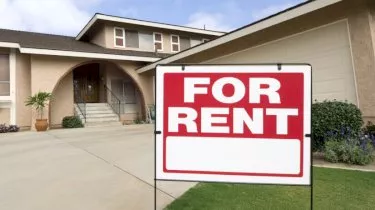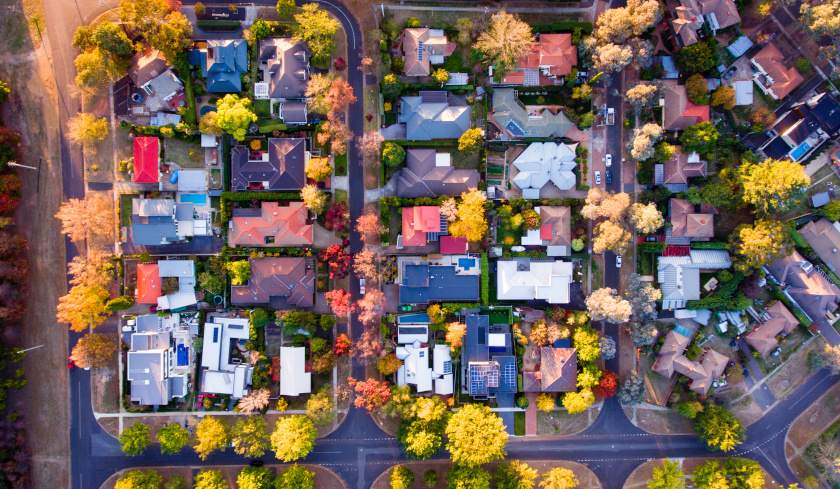Invest
Where in Australia is it better to rentvest?
New research has suggested that some first home buyers should consider renting where they want to live and buy a home elsewhere.
Where in Australia is it better to rentvest?
New research has suggested that some first home buyers should consider renting where they want to live and buy a home elsewhere.

Analysis of the property market commissioned by Well Home Loans has identified 26 suburbs in Sydney and Melbourne where it may be better to rent rather than buy, providing a potential opportunity to rentvest.
The research also highlighted the top suburbs across the country that have good long-term growth potential and could appeal to prospective home buyers.
Well Home Loans CEO Scott Spencer explained that first-time buyers were typically forced to choose between buying a unit closer to the CBD or a house on the outer fringes.
“But there is a third option some first home buyers might not have considered, which is to rent a unit in their dream suburb and buy a house for investment purposes in a cheaper market with long-term growth potential,” he said.

“At some point in the future, you might be able to use the equity from your investment property to buy the house you always wanted in Sydney or Melbourne.”
To determine the suburbs where it is better to rent rather than buy, the research looked for locations where downward pressure was being placed on weekly rents and property prices.
This included suburbs where vacancy rates were above 1.5 per cent, yields were below 4 per cent and the median price for units has grown at less than half the rate of houses.
Starting with a budget of between $500k and $600k, buyers would be able to afford a median unit in suburbs like Wentworthville and Auburn in Sydney, and Box Hill and Doncaster in Victoria; however, the research indicated it would be better to rent in these suburbs than buy.
North Melbourne, Maribyrnong, Hawthorn East, South Yarra, Abbotsford and Brunswick in Melbourne were also highlighted as suburbs where it is better to rent.
The research then looked for locations ripe for rentvesting with vacancy rates below 1.5 per cent, yields above 3.5 per cent, inventory levels under 5 months and median house price growth of 5 per cent or more over the past ten years.
Based on this data, Darling Downs in Western Australia was ranked as the top suburb for buying a house at the same price point of $500k to $600k, followed by Nambour in Queensland and Sorell, Mornington, Orakdowns and Brighton in Tasmania.
For buyers with a budget between $600k and $700k, Well Home Loans suggested that renting a unit was better than buying in the Sydney suburbs of Toongabbie, Canterbury and Hurstville, and the Melbourne suburbs of West Melbourne, Moonee Ponds, Williamstown, South Melbourne, Caulfield North, Glen Iris and Armadale.
At this price point, the firm ranked Coombabah in Queensland as the best suburb to buy a house, ahead of Midway Point in Tasmania and Meridan Plains, Caloundra West and Lower Beechmont, also in Queensland.
Meanwhile, for those with a budget of between $700k and $800k, the research indicated that renting was better in Ryde and Carlingford in Sydney, and Heidelberg, Malvern East, Clayton and Oakleigh in Melbourne.
Instead, prospective buyers could consider buying a house with a similar price in one of the top-ranked suburbs for rentvesting which include Highland Park, Merrimac and Little Mountain in Queensland.
Despite the opportunities available to potential buyers, Mr Spencer issued a warning for those considering rentvesting.
“Rentvesting isn’t for everyone, because deciding where to live and buy is as much of an emotional decision as it is a financial one,” he said.
“So first home buyers should weigh up both those factors when deciding whether to follow the traditional owner-occupier path or choose the increasingly popular rentvesting option.”

Property
North platform adds household reporting feature to boost adviser efficiency
AMP's North platform has launched consolidated household reporting across multiple client accounts, helping financial advisers streamline their client review processes. Read more

Property
What Adds The Most Value To Properties?
Wondering how to up the value of your property? Properties are worth a lot of money in general, but there’s always a way to maximise value. The good news is that most of the things you can do to ...Read more

Property
Centuria reports strong growth in alternative real estate sectors for FY24
Centuria Capital Group has reported significant growth in alternative real estate sectors for the 2024 financial year, driving stable performance and increased guidance for FY25. Read more

Property
How to leverage equity in your home for investment or renovation
Home equity, the value of your property minus any debts owed, is a powerful financial resource many homeowners in Australia can utilize to further their financial goals. Whether you're looking to ...Read more

Property
Exploring REITs: Real estate investment without buying property
Real Estate Investment Trusts (REITs) offer a compelling investment alternative for those interested in the real estate market but may not want to endure the complexities and capital requirements of ...Read more

Property
Retirement communities: a pivotal element in meeting Australia's housing targets
The Retirement Living Council (RLC) has recommended that retirement communities should be considered a vital part in the Australian Government's initiative to fulfill the Housing Australia Future Fund ...Read more

Property
Australians adjust financial strategies amid changing property market dynamics
The 2023 calendar year saw Australian borrowers acquiring a total of $300.9 billion in new loans for property purchases, marking a 12.7% decrease from the previous year. Read more

Property
Split home loans unlocking doors for Aussie buyers
Australians are teaming up to dive into the real estate market and seize the advantages of home ownership, with the trend of split home loans surging as family and friends unite to buy properties ...Read more

Property
North platform adds household reporting feature to boost adviser efficiency
AMP's North platform has launched consolidated household reporting across multiple client accounts, helping financial advisers streamline their client review processes. Read more

Property
What Adds The Most Value To Properties?
Wondering how to up the value of your property? Properties are worth a lot of money in general, but there’s always a way to maximise value. The good news is that most of the things you can do to ...Read more

Property
Centuria reports strong growth in alternative real estate sectors for FY24
Centuria Capital Group has reported significant growth in alternative real estate sectors for the 2024 financial year, driving stable performance and increased guidance for FY25. Read more

Property
How to leverage equity in your home for investment or renovation
Home equity, the value of your property minus any debts owed, is a powerful financial resource many homeowners in Australia can utilize to further their financial goals. Whether you're looking to ...Read more

Property
Exploring REITs: Real estate investment without buying property
Real Estate Investment Trusts (REITs) offer a compelling investment alternative for those interested in the real estate market but may not want to endure the complexities and capital requirements of ...Read more

Property
Retirement communities: a pivotal element in meeting Australia's housing targets
The Retirement Living Council (RLC) has recommended that retirement communities should be considered a vital part in the Australian Government's initiative to fulfill the Housing Australia Future Fund ...Read more

Property
Australians adjust financial strategies amid changing property market dynamics
The 2023 calendar year saw Australian borrowers acquiring a total of $300.9 billion in new loans for property purchases, marking a 12.7% decrease from the previous year. Read more

Property
Split home loans unlocking doors for Aussie buyers
Australians are teaming up to dive into the real estate market and seize the advantages of home ownership, with the trend of split home loans surging as family and friends unite to buy properties ...Read more








